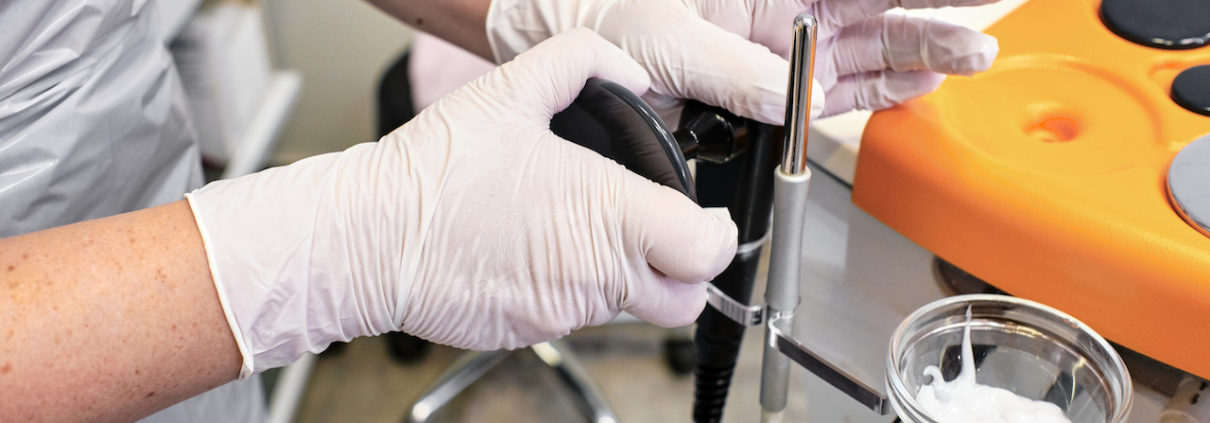Diathermy Smoke Plume Management & Guidance
What is a Diathermy Smoke Plume?
A diathermy smoke plume – also known as surgical smoke – is an emission created by certain surgical procedures that involve the use of heat to destruct tissue or seal bleeding vessels. Diathermy smoke plumes can contain numerous harmful chemicals, along with viruses, bacteria, and particulate matter.
What Causes Surgical Smoke?
Many devices can produce diathermy smoke plums, including lasers, ultrasonic devices, and high speed drills and burrs.
Diathermy Smoke Exposure
Exposure can lead to viral transmission along with certain acute health conditions, including asthma and asthma-like symptoms. And little is known about the long-term effects of chronic exposure to diathermy smoke plumes.
Read our full guide to the hazards associated with diathermy smoke plumes.
Diathermy Smoke Plume Management
Healthcare providers around the world have devised recommended practices, guidelines, standards and regulations concerning diathermy smoke plumes.
The best defence against smoke plumes is the practitioner. An AORN publication advised that practitioners should “use available tools and knowledge to minimise exposure to surgical smoke. Until there are regulations that reduce the occupational hazard of surgical smoke, become an expert in what can be done.” (Emphasis ours.)
In this post, we’ll explore some of the common best-practice guidelines concerning diathermy smoke plume management.
Electrosurgery Hazard Training and Support
First, all healthcare settings should have procedures in place that address the hazards associated with electrosurgery, including the risks of diathermy smoke plumes.
Also, any practitioner that may work with electrosurgical equipment, or who may be exposed to diathermy smoke plumes, should receive appropriate training to help them understand the risks and minimise their exposure.
Key things to cover in this training include:
- The different types of electrosurgery equipment – the function and correct use of each, and how to minimise the associated risks.
- How to rectify simple problems, and avoid risks to other theatre staff.
- How to store electrosurgical items during procedures when they’re not in use.
Electrosurgical Equipment Storage & Management
There should be specific procedures in place regarding the use, storage and management of electrosurgical equipment.
Staff should be able to tell whether electrosurgical machines are in good order, and whether they’ve been correctly maintained. They should therefore know which checks to make prior to use.
To reduce the risks of smoke plumes and other health hazards, electrosurgical teams should aim to use the lowest power setting possible for safe and effective cutting and coagulation.
Patient Preparation
Practitioners should be familiar with preparing patients for procedures. But there are certain factors that may affect the use of electrosurgery:
- The patient’s age, weight and fat distribution.
- Active implants, such as pacemakers. Cardiologist teams may need to perform additional checks before and after the operation.
- Considerations regarding the return electrode – such as the patient’s allergy to the electrode gel, and the position of the electrode in relation to the patient, the surgical site, and any scars, metal implants or other foreign bodies.
Personal Protective Equipment (PPE)
As is always the case, it’s important to choose the right PPE for the right procedure.
When performing procedures that might produce surgical smoke, a standard surgical mask may not be adequate, as it may not filter out the small particles contained within the diathermy smoke plume.
So instead, practitioners should use a properly fitted facepiece respirator, such as an N95.
It’s important to test the respirator’s seal to ensure a correct fit. A specialist face fit testing service can help you ensure that all members of the electrosurgical team can depend on their respirators to protect them from the harmful effects of diathermy smoke plumes.
Smoke Evacuation Systems
Local exhaust ventilation (LEV) is one of the best defences against the risks of surgical smoke. This involves using specialist smoke extraction systems to remove the diathermy smoke plume at source. This, coupled with adequate PPE and a resilient and informed electrosurgical team, will make a huge difference in managing the risks of diathermy smoke plumes in operating theatres.
Operating theatres are generally well-ventilated, with strict regulations advising a set number of air changes per hour. But on top of these advanced air filtration systems, additional air purification units can help control any excess smoke created by procedures.
The Blueair Health Protect 7440i Air Purifier can completely filter the air in a room of up to 38m² the suggested 4.8 times per hour. Its advanced filters can trap and kill up to 99.9% of potentially harmful particles in the air down to 0.1 micron. This includes viruses, bacteria, and the hazardous chemicals contained in diathermy smoke plumes.
As well as supplying specialist air purifiers for healthcare settings, we also offer bespoke air quality monitoring systems. We can monitor your practitioner’s exposure to diathermy smoke plumes, before presenting you with a detailed report complete with actionable recommendations.
Further Guidance
- MHRA electrosurgery safety poster
- Health and Safety Executive (HSE) Research Report (RR922): Evidence for exposure and harmful effects of diathermy plumes (surgical smoke)



